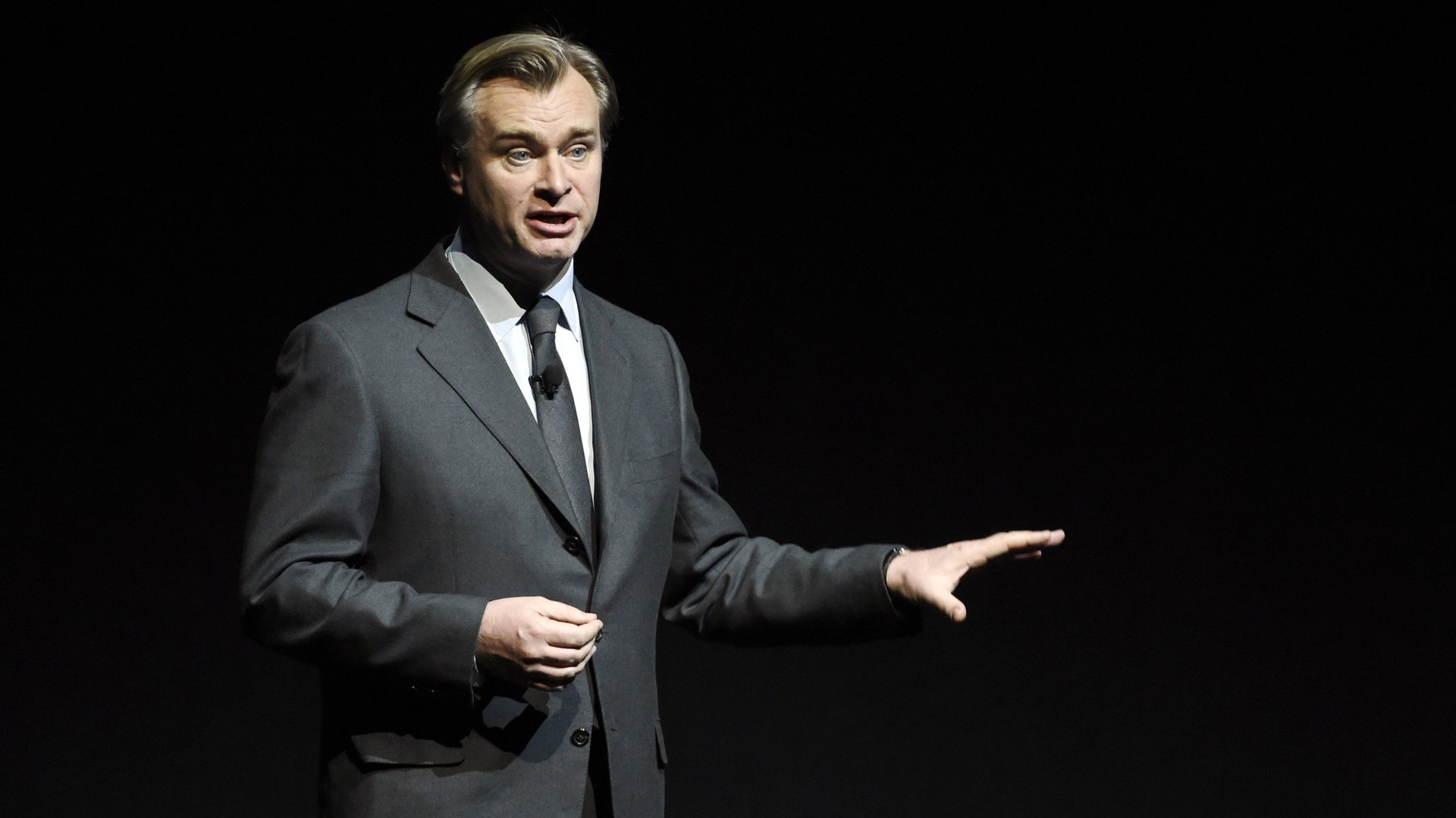“Dunkirk’s” Christopher Nolan stands up for film—and against Netflix
There’s nothing quite like filming a movie on film, according to the director Christopher Nolan. His new WWII film, Dunkirk, was shot entirely on epic 65mm, as opposed to digital. And it’s receiving the widest release of that film format in recent history.


There’s nothing quite like filming a movie on film, according to the director Christopher Nolan. His new WWII film, Dunkirk, was shot entirely on epic 65mm, as opposed to digital. And it’s receiving the widest release of that film format in recent history.
He says the format—especially when shown on IMAX screens—could be cinema’s best defense against watching movies at home. “This is something that nobody will ever be able to see in their living room,” Nolan told the Philadelphia Inquirer. “It’s the best argument that cinema has against the competition represented by improvement to home-video systems. I think the studios understand that.”
The competition isn’t just from from new and improved TVs and surround-sound systems that can replicate the picture and audio-quality once found only in theaters. The cinema-quality movies offered cheaply online by Netflix also gives viewers fewer reasons to venture to the theaters.
Nolan, who prefers to shoot on film, slammed Netflix’s approach to the genre. The streaming service’s original movies are all shot and archived digitally in 4K, and premiere simultaneously online and in theaters, if they hit theaters at all. “Netflix has a bizarre aversion to supporting theatrical films,” he told IndieWire. “They have this mindless policy of everything having to be simultaneously streamed and released, which is obviously an untenable model for theatrical presentation.”
The streaming service has attracted notable talent like Martin Scorsese, David Ayer, and Bong Joon Ho by offering the big budgets and creative freedom that only blockbuster auteurs like Nolan are afforded in Hollywood these days. Still, Nolan said he’d never work with the platform.
“Well, why would you?” he said. ”If you make a theatrical film, it’s to be played in theaters.” Ava DuVernay, who directs both theatrical fare like Disney’s upcoming adaptation of A Wrinkle in Time and documentaries like 13th for Netflix, made a valid retort via Twitter:
And the model makes sense for Netflix, which is making movies for its members, whose monthly subscription fees help bankroll the productions. “It seemed to me like the right thing to do was to give the people, our subscribers, who pay to make these movies, access to them immediately all over the world,” Netflix’s chief content officer Ted Sarandos told the New York Times (paywall), during the Cannes Film Festival in May.
We’ll see over the weekend whether Dunkirk supports Nolan’s theory that using the same format that was used for 2001: A Space Odyssey, Lawrence of Arabia, and Ben Hur will fill more cinema seats. The movie will be screened in 70mm at 125 US locations, including 30 IMAX theaters. That’s more than the 50 venues Nolan’s last movie, Interstellar, screened in and the 100 Quentin Tarantino’s The Hateful Eight played in two years ago, Deadline reported.
The Weinstein Company invested $11 million in 2015 to help get theaters the extra equipment that’s sometimes needed to play films on 70mm for that Christmas Day release—and opened the door for Nolan to screen Dunkirk in even more cinemas. Warner Bros. reportedly bought those projectors from TWC for the Dunkirk release.
(Nolan has argued that he can make movies at his scale more cheaply on film than in digital, but there’s also a cost on the cinema side. Most US theaters have switched from film to digital by this point. And the old projectors used to screen 70mm aren’t easy to work with, as Deadline detailed.)
Dunkirk is expected to bring in around $40 million (though some expect it to do more like $50 million) at the North American box office this weekend, and mark one of the biggest openings for a World War II movie.